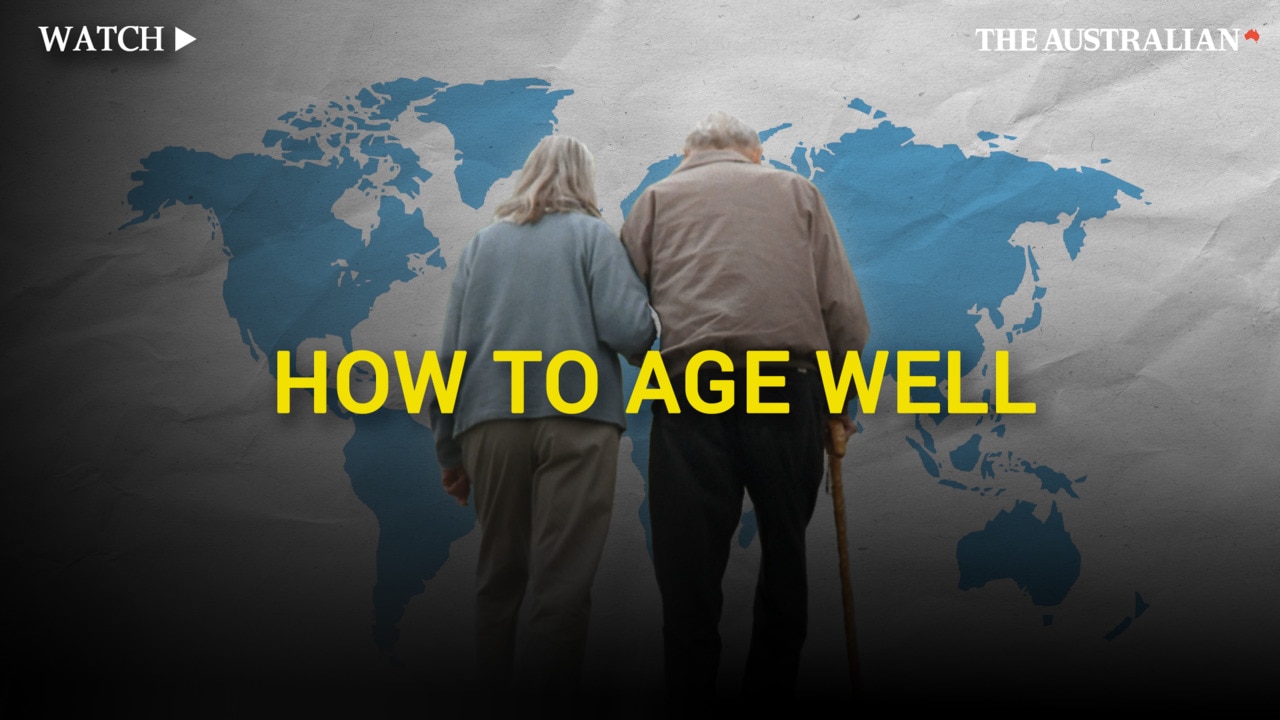Is it really time for aged care? How do I know?
All Australians will need help as they move into older age. How will you know when it’s time for support? What are your options, and what are you entitled to?

We may not like it, but if we’re not there already, then we’re on our way.
Ageing is inevitable, and old age is better than the alternative. But it shouldn’t be a cause for dread. Studies consistently show that as we age we generally become happier and more satisfied with our lives.
But sooner or later, no matter how lucky we are in avoiding illness, we’ll become more frail in body and mind. Some of that is down to lifestyle, some to genetics. It’s only the pace of change that differs.
At a certain point this will likely mean we need help with our care.
Let’s face it, no one is enthusiastically rushing toward their first day in Australia’s aged care system.
Indeed, many of us will be lucky enough to be supported by loved ones and may never need anything else.
But many of us won’t. Almost 1.3 million older Australians received some form of government aged-care support in 2022-23, either in their home (1.1 million) or in a nursing home (200,000).
Around 36 per cent of those aged 70-plus receive at least some government financial help for aged care, rising to 80 per cent for those 85 and older. But the majority of these are being funded for lower-level supports at home rather than for personal care.
It’s big money. Taxpayers ploughed $35bn into aged care in 2023-24, making it one of the federal government’s five biggest spending programs. And despite their comparatively small numbers, nursing home residents were responsible for almost 60 per cent of it – about $20bn.
As more baby boomers push through into old age, the amount of spending is only going to increase.
The Intergenerational Report tells us that over the next 40 years, the number of Australians aged 85 and over will more than triple, pushing the figure close to two million people.
And the aged care royal commission’s final report in 2021 adds this grim conclusion: “With advanced age comes greater frailty. Older people are more likely to have more than one health condition as their life expectancy increases. As the population of older people increases, more people are expected to have memory and mobility disorders.”
Do the maths. This is likely to be you. If not you, it’s almost certainly your parents. Some honest conversations might need to be had.
“People actively avoid talking about ageing and aged care, and then often have to make decisions at a time of crisis,” Council on the Ageing chief executive Patricia Sparrow warns.
“Thinking and finding out about aged care before you are in a crisis can help you keep control and independence.”
Older Persons Advocacy Network chief executive officer Craig Gear agrees. “One of the things I see in the work we do at my organisation is people not planning ahead (and) being in control of their aged-care journey.”

Mr Gear says older people may be unwilling to confront ageing, or they may feel they don’t want the government in their lives.
“You’ve lived your life contributing, paid your taxes. You’re entitled to have the services you want, in the way you want them,” he says.
“Sure, I understand people may not want to give up their autonomy, and to have someone in their home helping them. But it is the best way to stay independent and in your home.”
Are you ready for aged care?
As you age, things you could once do without thinking about now require more effort, or become impossible.
It may be the garden, or housework, or cooking. It may be hard to get to the shops to buy groceries or make it to a medical appointment. Or it may have reached the stage where bathing safely is beyond you.
This is not a sign you need to move into residential aged care.
“When we talk about aged care, most people automatically think of nursing homes,” Ms Sparrow says.
“But there is support to help you stay in your own home through Home Care Packages or the Commonwealth Support at Home program.
“This can include things like house cleaning, assistance with showering, meals and support to keep you socially connected as well as giving anyone caring for you a break (called respite care).
“A home-care package brings those things together for you when your need for support is higher.”
We’ll work through this in greater detail, but the programs Ms Sparrow mentions are under the current aged-care system. A reform package was passed in November, with the new aged-care act putting even more emphasis on helping older Australians remain in their own homes longer.
“Older Australians increasingly want the freedom, support and choice to remain in the home and community they love,” Aged Care Minister Anika Wells said in launching the new legislation.
Of course, for some it gets to the point where living at home simply becomes too much, when ongoing help with everyday tasks or health becomes necessary.
But let’s get back to basics. If you’re finding some of those things you used to be able to do harder, how do you know where to turn for help?
Ms Sparrow knows this is a threshold moment for older Australians, and the aged-care system can seem Byzantine.

“It can be daunting when you first need an assessment to see if you are eligible and then to find the services you need and want in your local area,” she says.
“The My Aged Care website is a good place to start, but most older people also talk to others about their experiences or to a trusted person, maybe a family member.
“There are also services called Care Finders who can help you if you need intensive help to find what you need. COTA Australia thinks there should be more care finder-style services for more people because sometimes just talking to someone who knows the system can be enormously helpful,” Ms Sparrow says.
Care at home – the current system
Of course, every Australian has different needs when they age. The government’s MyAgedCare website offers a clear walk-through of where to start, including the services available, your eligibility, and the potential personal cost.
Areas of support include keeping your home liveable, keeping you well, helping you get out of the house and stay social, and getting in some temporary help.
Beyond the age criteria of 65-plus, the eligibility criteria includes whether you can get out of bed or take a bath, prepare or eat meals or do basic housework and shopping. This gives you a sense that you need an aged-care assessment.
This, of course, is a highly individualised process. The government provides a number of cameos on the MyAgedCare website to provide guidance, such as the case of “Barry”.
“After suffering a stroke, 81-year-old Barry’s balance was badly affected, which made him lose his confidence. He stopped going out to meet friends, spending time at church, and looking after things at home. Barry wanted to get stronger so he could do more around the house and garden. He also wanted to resume his social life and church activities.
“So he contacted My Aged Care to arrange an assessment for aged care services. An assessor came to Barry’s house and developed a support plan to help him achieve his goals.
“The plan included a home maintenance service provider, who suggested ways to make his garden safer and easier to maintain. They introduced a short ramp so Barry would have safe access outside his home. This meant he could get outside safely to enjoy his garden.
“The plan also included a physiotherapist to design some light exercises to follow at home. After following the physio’s exercise plan, Barry regained his balance, and was able to walk unaided at home. This gave him confidence to go out and meet his friends and get back to his church activities with his local community.”
When considering whether it’s time for home-care support, the other question is money – how much you will contribute to your care, and how much the government will stump up. Again this is complex and depends on your circumstances, but if you are a self-funded retiree it is likely you will be putting in some of your own funds.

Care at home – from July 2025
The federal government’s new aged-care approach will, over the next few years, bring the two at-home support programs together. And it will add an additional 300,000 in-home care places into the system over the next decade. Keeping people in their homes will have the budget benefit of not adding to numbers in the expensive residential care sector.
Most critically, from a consumer’s perspective, it will focus support at both ends of the aged-care continuum, provide more early interventions so older people can stay active and independent, and also build more support for those with more complex needs who are looking to stay at home.
It moves to categorise care services into clinical care (wound tending), independence (support with cooking or bathing) and everyday living (such as gardening and cleaning). The government will fund all clinical care, but the others will attract co-contributions, the amounts depending on a means test.
As an example, a self-funded retiree would be fully funded for physiotherapy in their Support at Home package, but would pay 50 per cent of the costs of bathing support, and 80 per cent of the cost of home maintenance.
Specifically, the new reform package will increase the maximum annual amount of funding available for in-home aged care from $61,440 to $78,000 for those with the most complex needs.
It will also provide upfront funding to those who qualify of up to $15,000 for home modifications such as stair and shower rails.
And crucially it promises to cut the time between receiving an approval for a package and getting the funding down to three months, from July 2027. Currently, people can wait for up to 12 months to receive the highest level home-care packages, which often means they need to move into residential care before they can start to use it.
Older people understandably worry about how they will die, and the new in-home support program will offer a new End-of-Life Pathway that provides up to $25,000 over three months for those with less than three months to live, to help them pass away with dignity in their own home.
But bringing the new laws to fruition has not been smooth sailing for the Albanese government. Already they have been forced to defer by a year changing the system to stop home-care providers setting the price of various services such as cleaning and gardening. Under the new Support at Home program the legislation introduces a “national efficient price” for such services. But amid concerns from providers about the pace of change leading to service disruption for clients, the government pushed the starting date for this element of the reforms from July 2025 to July 2026.
Should I be thinking about residential aged care?
They may be among the hardest conversations a family will ever have. Telling a loved one it’s time for them to be in a nursing home, most likely for their own safety, is going to be an emotional moment.
But it may be better than the alternative. Too often a fall and a broken hip is the catalyst for a hurried, fraught family meeting about finding a spot in whatever aged-care facility has a spare space.
The nature of residential aged care has changed in recent decades. The ageing population and the preference for staying at home as long as possible has meant residents are older and more frail than ever before.
It is the fine balance a home must try to walk, between a place to call home and a setting that needs to provide almost hospital-level care for residents in terms of continence, medication management and other services.
Once you enter a nursing home, they are obliged to provide accommodation, meals and toiletries. They must support you with bathing and eating if required, as well as provide therapy services such as speech therapy and podiatry.
Again, eligibility will be determined by an assessment team, usually coming to see you in person in your home, or in the hospital.
The other factor is how much it costs. As mentioned earlier, the federal government poured $20bn into nursing home care for just under 190,000 people in 2023-24, an average of more than $100,000 for each permanent resident.
But older people, depending on their means, pick up some of the cost. Everyone pays a daily fee to contribute towards the costs of meals, laundry and utilities. Other costs of care and the accommodation component are determined through a complex arrangement based on means tests. This will also be different whether people decide to pay their care through a daily payment or with an upfront lump sum, the balance of which is returned to a person’s estate when they die.
Come July 2025, there will be changes to the residential aged-care system as well as home care. The changes aren’t as radical, coalescing mainly about the cost of care.
Providers have argued that the services they are expected to provide mean more than half have been forced to operate at a loss, many for years in a row.
The new laws will see individuals with means pay more out of their own pocket for the non-direct care components of their care – that is the accommodation costs and items such as food and laundry.
Industry analysis shows the average additional cost of the changes to a self-funded retiree paying the upfront lump sum, a Residential Accommodation Deposit, would be $49 a day, or $18,000 a year.
Independence is something no one wants to forsake, at any age. Older Australians have a right to it under the new Charter of Rights introduced as part of the aged-care changes.
But you need to act, and not leave it until too late.
“Older people overwhelmingly tell me they want to stay in their own homes,” Mr Gear says.
“Now’s the time to set a plan to direct the services you need to keep you in your home and connected to your community. It’s the best way to stay in control.”





To join the conversation, please log in. Don't have an account? Register
Join the conversation, you are commenting as Logout